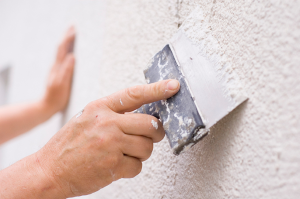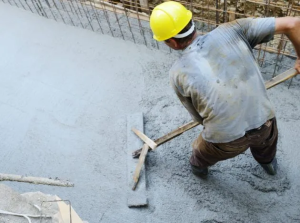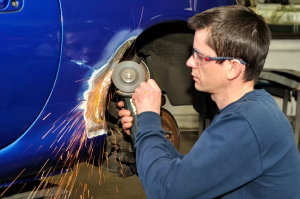Colonoscopy Phoenix is a routine screening for colon cancer, a deadly disease that starts in the colon’s lining. UNC Specialty Care at Goldsboro has experts in this procedure.
A colonoscopy involves being given sedatives and pain medicine. You also will take a laxative formula to clean out your large intestine.

A flexible tube called a colonoscope is inserted into the anus and into your rectum and colon, where it can be used to take pictures of your large intestine lining. The images are transmitted to a video monitor, so your doctor can see them clearly. A doctor can also use the scope to remove a small piece of a polyp or tumor (biopsy) for further study in a laboratory. The biopsy can help determine whether a growth is cancerous or not and is needed to plan treatment.
During the test, you will lie on your back or side. You may feel a little gas pain or pressure as the colonoscope pushes into your rectum and colon. This is normal, and happens because the scope blows carbon dioxide gas into your colon to inflate it for better viewing.
Your doctor will be watching your heart, breathing and blood pressure during the procedure. Most patients receive sedation or general anesthesia to make the procedure less uncomfortable. It’s important to talk to your doctor about the type of sedation you receive.
While rare, complications during a colonoscopy can include infection of the lower colon wall from bacteria introduced through the endoscope. Infections can also occur from inadequate removal of a polyp or tumor or from biops that are missed because of rapid examination time. This is an important reason why lawsuits over missed cancerous lesions have prompted institutions to increase their emphasis on thoroughness and accuracy of endoscope examinations.
Another serious risk of a colonoscopy is accidental perforation of the large intestine, particularly the sigmoid colon. This can happen when the tip of the colonoscope accidentally punctures the colon wall while maneuvering through tight corners or turns in the colon. This problem can be prevented by carefully removing any tissue that obstructs the path of the colonoscope and by not pushing too hard against the colon wall when inserting the scope.
Other complications that can occur during a colonoscopy are bleeding or an allergic reaction to the sedative. Bleeding can be treated with medications or with a blood transfusion. A perforation may require surgery to repair.
Preparation
Before your colonoscopy, you will need to adjust your diet for a few days. Typically you will need to consume low-fiber foods and drink clear liquids starting the day before your appointment. The day of your exam, you will need to take a laxative formula, which could come in the form of pills, a liquid, a powder that dissolves in liquid, or an enema (or combinations). You may spend a lot of time in the bathroom as a result, but the process is necessary for the doctor to get a clear view of your colon and rectum.
When you arrive at the facility for your procedure, you will be asked to check in and change into a hospital gown. A nurse will then examine your vital signs and ask questions about your medical history, including any allergies or previous negative reactions to anesthesia. You will also be asked to sign a consent form, which states that you agree to undergo the test and understand the possible risks and complications.
Once you are ready, a nurse will insert an intravenous line into your arm to deliver the anesthesia medicine. The anesthesiologist will then enter the room to prepare you for the colonoscopy. You will be given propofol, which is a sedative. It is similar to a morphine injection, but it has a lower risk of addiction. You will not need to be put on a breathing tube like you would during more significant surgery, and you will be conscious throughout the procedure.
During the procedure, you will lie on your back or side on an examination table. The doctor will look at your rectum and colon using the camera attached to the end of the colonoscope. If any abnormalities are detected, such as polyps or tumors, the doctor will remove a small sample through the colonoscope and send it to the lab for further testing. Generally, these polyps are benign and do not require further treatment.
After the procedure, you will be taken to a recovery room, where a nurse will monitor you until most of the anesthesia and sedative have worn off. You should not drive after the procedure, and you should arrange for someone to take you home.
Procedure
A colonoscopy is a safe and quick procedure that allows doctors to examine the inside of your large intestine. It can be used to diagnose conditions like colitis, inflammatory bowel disease and diverticulosis, but its most important purpose is to detect precancerous and cancerous polyps that might otherwise go unnoticed. Polyps are small, fleshy growths on the inner lining of your colon. They’re not necessarily cancer, but if left to grow they could become cancer and can be removed during the same procedure as a colonoscopy.
The procedure is usually done at a hospital, medical office or outpatient center. You’ll be asked to lie on a table while the doctor inserts a thin tube through your anus and into your rectum. They’ll lubricate the tube with gel so it slips in easily. The doctor will then put a camera on the end of the tube and send a video image to a monitor. They’ll watch it carefully and when they see anything abnormal, they’ll pull the tube out and bring it back in for a second look.
During the procedure, doctors may remove a few small polyps or other suspicious tissue that’s biopsied. The tissue will then be sent to a lab to check for signs of cancer. If your doctor finds cancer, it’s likely you will need follow-up tests or treatments.
The bowel prep for a colonoscopy can be hard on your system, but it’s important that you follow the instructions exactly so that your doctor has a clear view of your bowel during the procedure. The prep can involve pills, a powder that dissolves in liquid or an enema and it will cause diarrhea so you’ll need to stay close to a bathroom. It’s also a good idea to have some things on hand that will help you get through the process like wet wipes, diapers and snacks that are low in fiber or protein. Doctors will usually give you specific preparation guidelines based on your health condition and any other medications or supplements that you take. Your sex and gender don’t affect what prep is recommended for you.
Recovery
Depending on the reason for your colonoscopy, you may have different instructions post-procedure. “If it’s for a GI condition like IBS or Crohn’s, you may have specific aftercare based on your symptoms,” Chang says. For instance, you might need to take antibiotics to prevent further flare-ups. You might also be prescribed a pain reliever, depending on how much pain you’re experiencing.
For the most part, your recovery from a colonoscopy will be relatively quick, though you’ll want to follow some post-procedure guidelines. “I tell patients to drink lots of fluids, especially water, and avoid dairy products,” Alasadi explains. You’ll also need to start a clear liquid diet 24 hours before your procedure and stop consuming anything that you can’t see through, including gelatin, red or purple drinks, or broth. You’ll also need to take a laxative—which can be in the form of pills, powder that you dissolve in liquid, or an enema—to cleanse your colon.
During the actual procedure, you’ll lie on your back while your specialist passes a long, black flexible tube with a camera and light on the end into your back passage and up to your colon. They may inflate your large intestine with air to get a better view of the lining, and you might feel gas cramps from this.
Once the procedure is complete, you’ll be wheeled to a recovery room or cubicle and monitored until the sedation wears off. You’ll need a ride home as the sedatives can affect your reflexes and judgment, making it unsafe for you to drive.
If polyps or biopsy samples are removed during the test, you’ll likely notice blood in your stool for a few days afterward. This is normal, but it’s important to check in with your doctor if the bleeding persists or seems severe.
Your doctor will give you specific instructions about what to do if you experience any problems after the procedure, such as pain, fever, bleeding or a hole in your colon or rectum (a life-threatening complication called perforation). You might also need to temporarily stop certain medications for diabetes or obesity, such as glucagon like peptide (GLP)-1 agonists like dulaglutide and sodium-glucose cotransporter-2 inhibitors like empagliflozin (brand names: Jardiance and Trulicity), as these can interfere with the bowel prep or the procedure.








